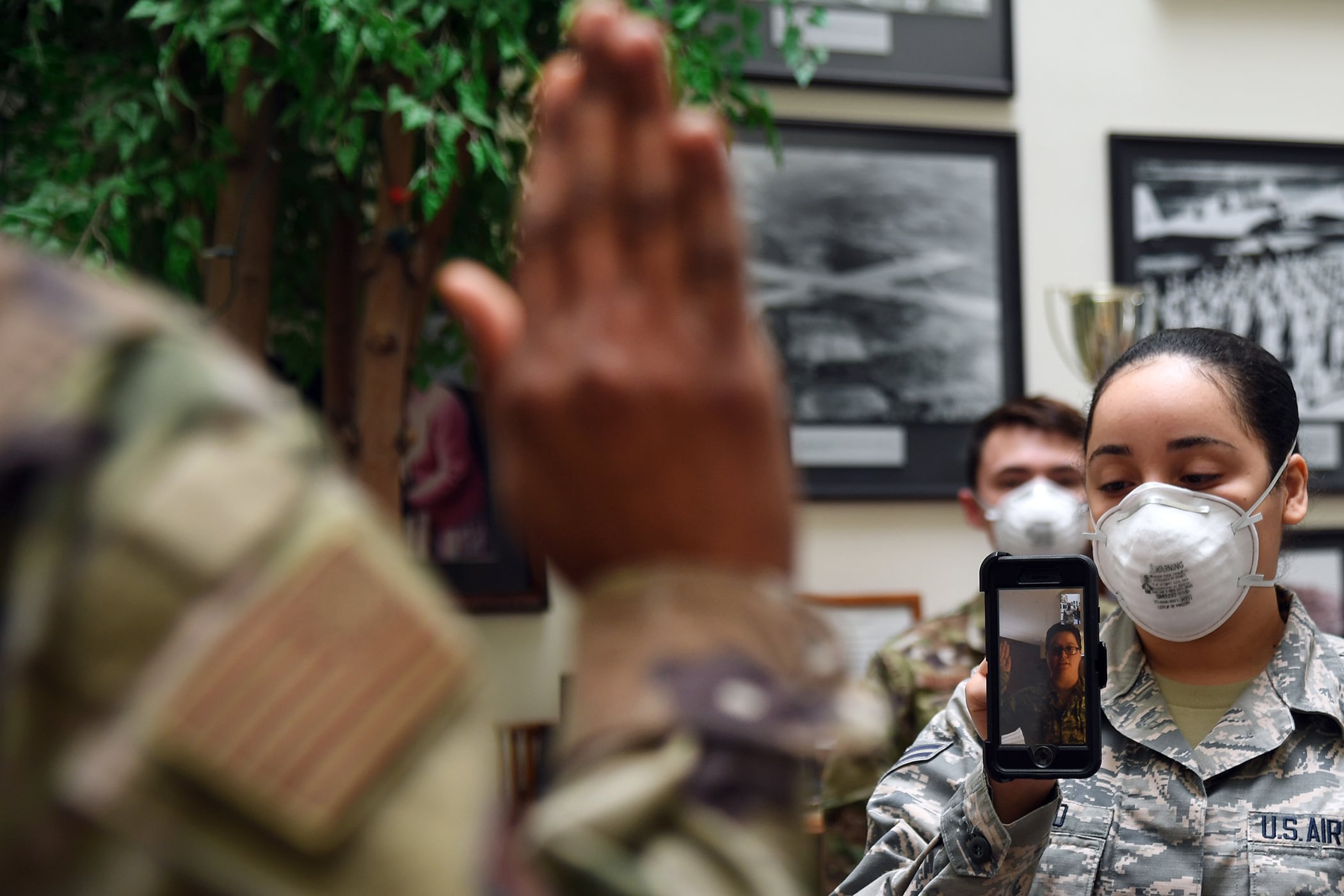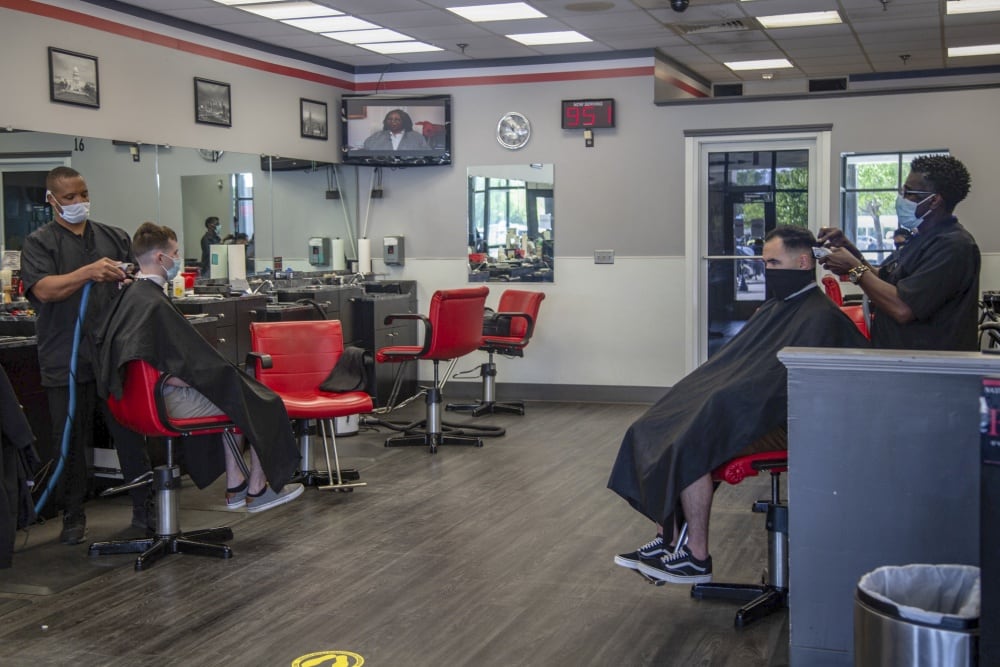Despite rapidly rising numbers of new COVID-19 cases throughout the Defense Department, Pentagon officials haves stopped short of expressing concern over the steady rise of cases.
June has outpaced what was thought to be the April peak, after May saw a decrease in diagnoses.
“While we are seeing some upticks in the same places there are upticks in the civilian sector, again, that is not necessarily overly surprising, in that we have been doing more testing,” assistant defense secretary for health affairs Tom McCaffery told reporters Wednesday. “And we have been doing testing of those who are asymptomatic.”
As of Wednesday, 12,521 troops have been diagnosed with COVID-19. When that figure is added to the civilian, dependent and contractor counts, DoD’s overall number has reached 18,071.
That’s an increase of 24 percent in the past week, or about 3,500 new cases. For troops, that jump is 27 percent, or more than 2,600 new cases.
The department in late April rolled out a tiered plan to test some asymptomatic troops, including those in strategic roles aboard nuclear bombers and submarines, as well as deploying troops.
The Pentagon’s top spokesman told Military Times at the time that the services had enough supplies and capacity to test everyone they needed to, and those 100-percent units would be cycled through on a rolling basis.
With May came a stabilizing effect on DoD cases, including within the services, followed by a sharp increase throughout June. At one point, new cases doubled in a week,, followed by an 18-percent and then 20-percent increase in new cases over the next two weeks.
“We would be concerned with any identification of new infections, but we are taking the same measures that the public health community writ large would take,” McCaffery said, including isolation and contact tracing after every positive test.
He could not say how many of these new cases came from symptomatic troops presenting themselves at health clinics versus those found through these 100-percent testing programs. He also could not say why, two months into this testing plan, the cases are rising so sharply now.
On the up side, McCaffery said, the increase in cases has not come with a comparable spike in deaths or hospitalizations, which would point to successful early testing, as well as a real increase in asymptomatic positives.
Death or hospitalization are not the only hits to readiness when it comes to COVID-19, however. Each positive requires at least a two-week quarantine, during which a service member can’t work. For those with symptoms, or who still come up positive after two weeks, it can take much longer to clear.
The first soldier diagnosed with COVID-19, in South Korea, spent 49 days in isolation before clearing all symptoms and testing negative twice.
Green to red?
McCaffery noted that increased cases among troops are coming out of states like Arizona, Texas, Florida and California, where local shelter-in-place orders have rolled back.
“So that wouldn’t be a surprise,” he said. “I mean, we’re part of the community and so where there are some upticks there, we are seeing that as well.”
Arizona and Texas have opened up for non-essential DoD travel, meaning that troops can make permanent change-of-station moves to those states, as well as visit on temporary duty.
In order to be cleared, those states needed to show a 14-day downward trend in both COVID-19 diagnoses and reports of COVID-like symptoms, as well as sufficient hospital capacity to deal with any outbreaks.
RELATED

But a reverse of those standards won’t necessarily put a state back on the red list, Lernes Hebert, the Pentagon’s director of military personnel policy, told Military Times.
“As you can imagine, the outbreak across the entire state of Texas is different,” he said.
For instance, Houston hospitals have been overwhelmed with intensive care patients in recent weeks, but that part of Texas is not a force concentration area. Similar trends in cities like Austin or San Antonio, which are the closest metropolitan areas to installations like Fort Hood and Joint Base San Antonio, would raise more of an alarm.
“Because we don’t want to do wholesale closing down and lifting of travel restrictions, we’re going to do it installation by installation,” Hebert said.
Hebert said his office expected to soon publish a list of bases recently downgraded from Health Protection Condition Charlie to Bravo.
Technically, garrison commanders are able to ban their assigned troops from frequenting local businesses, but it does not appear that those kinds of restrictions have been put in place.
In April, as discussions began to bubble up about the prospect of lifting travel restrictions and lowering health protection conditions at bases, Air Force Gen. John Hyten, vice Joint Chiefs chairman, told reporters that “local commanders have to have the ability to flex” ― meaning that their own rules could be looser or tighter than their host states and cities, if need be.
That is the case now, though Hebert did not offer specific examples of any installations where, for example, local or state rules allowed for gathering in bars and restaurants and did not require face masks while out and about, but a garrison commander has banned those establishments and mandated face coverings for all troops going out in public.
“I fully believe that local commanders are going to make the right decision both for the health and wellness of their active duty, their civilian employees, the families of active duty – and to make sure that they can meet their mission,” McCaffery said.
A similar policy has been in place throughout the pandemic when it came to social distancing. In March the Pentagon issued guidance to commanders to maintain strict six-foot distancing within units wherever possible, in addition to avoiding large formations and crowded indoor meetings, but did not mandate it.
RELATED

That guidance was unevenly followed in the beginning, most notably in installation exchanges, where barber shops remained open and troops were not always wearing masks or maintaining spacing in lines.
In late March, Defense Secretary Mark Esper went from maintaining that there would be no blanket social distancing policy to directly urging commanders to implement safeguards, in a livestreamed town hall.
“You take prudent measures as best you can given the situation you’re in,” Esper said. “If you can avoid putting a large number of people in small rooms, you should do it.”
But those policies, still in place, do not directly affect a service member’s conduct when they’re off base and off duty.
“As was mentioned earlier, we have a very well-informed, educated force, as is evidenced by the behavior they’re exhibiting throughout this pandemic,” Hebert said. “They’re concerned about their family, as is the secretary of defense, and they’re doing the sorts of things that are necessary to make their family safe. And so, we’re seeing very good behavior out of the force.”
Meghann Myers is the Pentagon bureau chief at Military Times. She covers operations, policy, personnel, leadership and other issues affecting service members.





